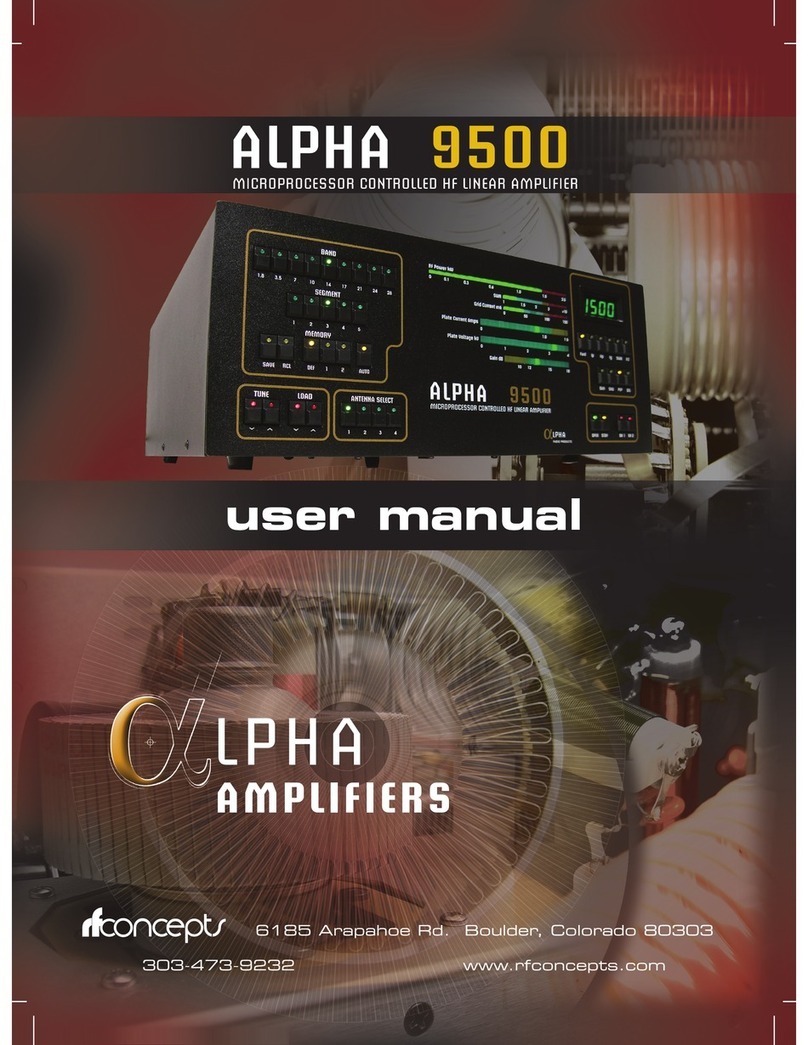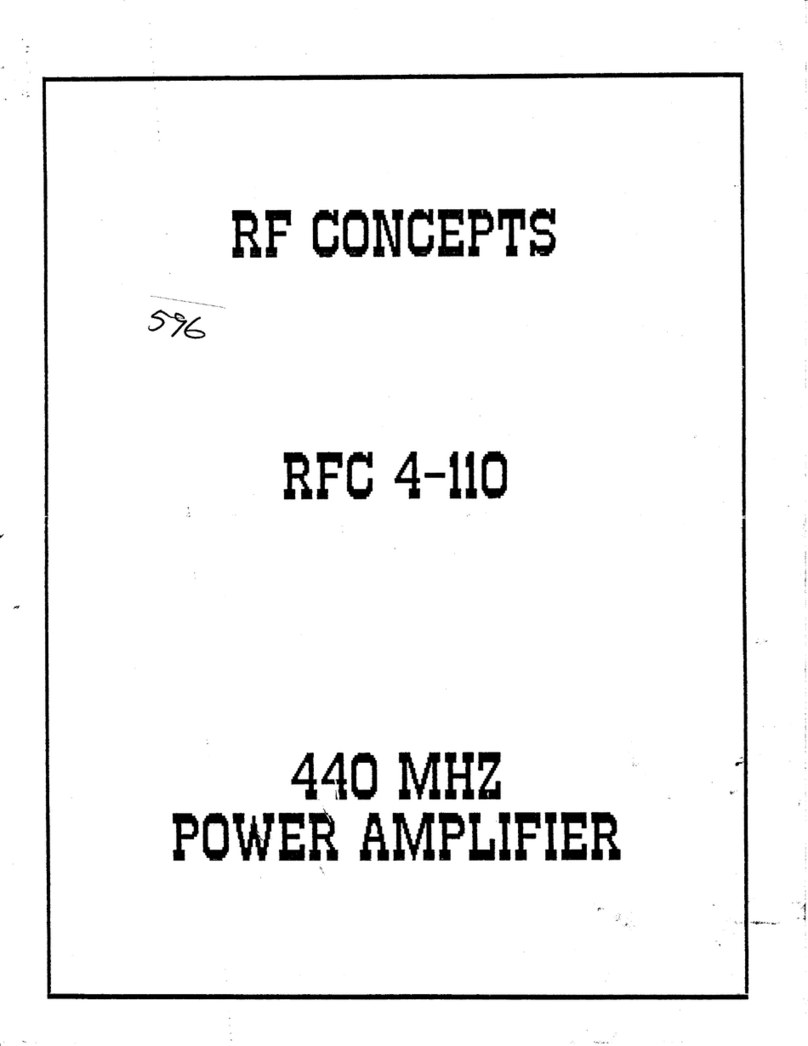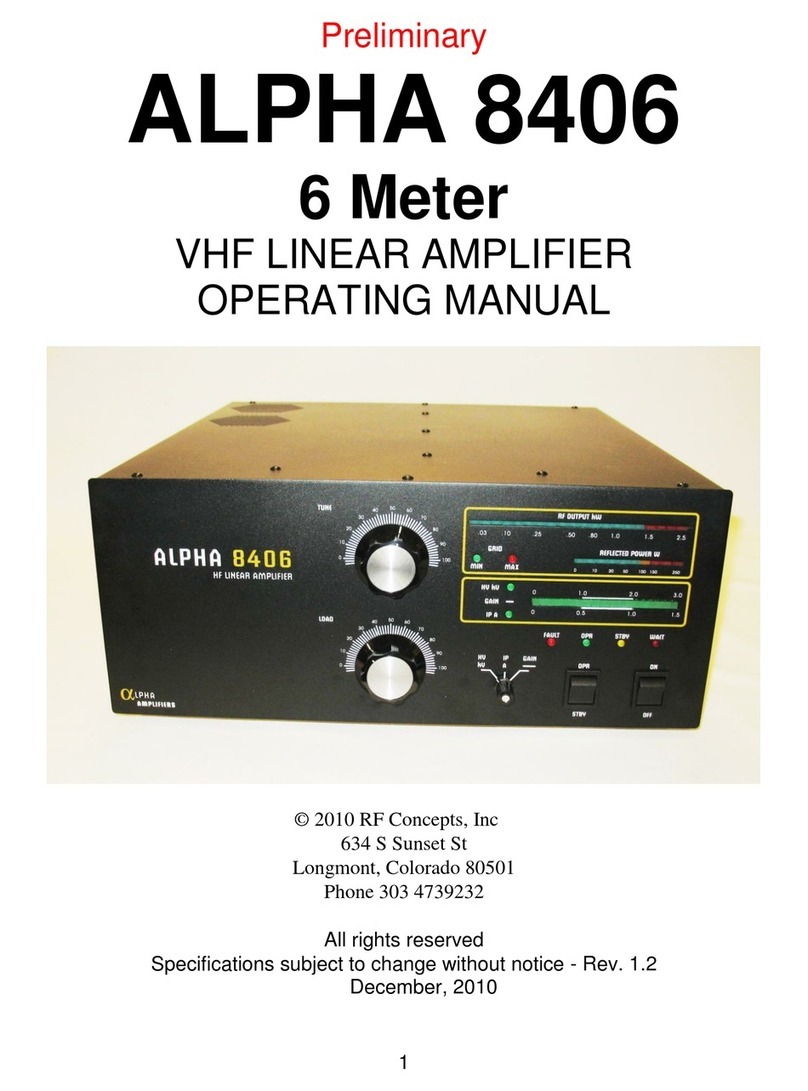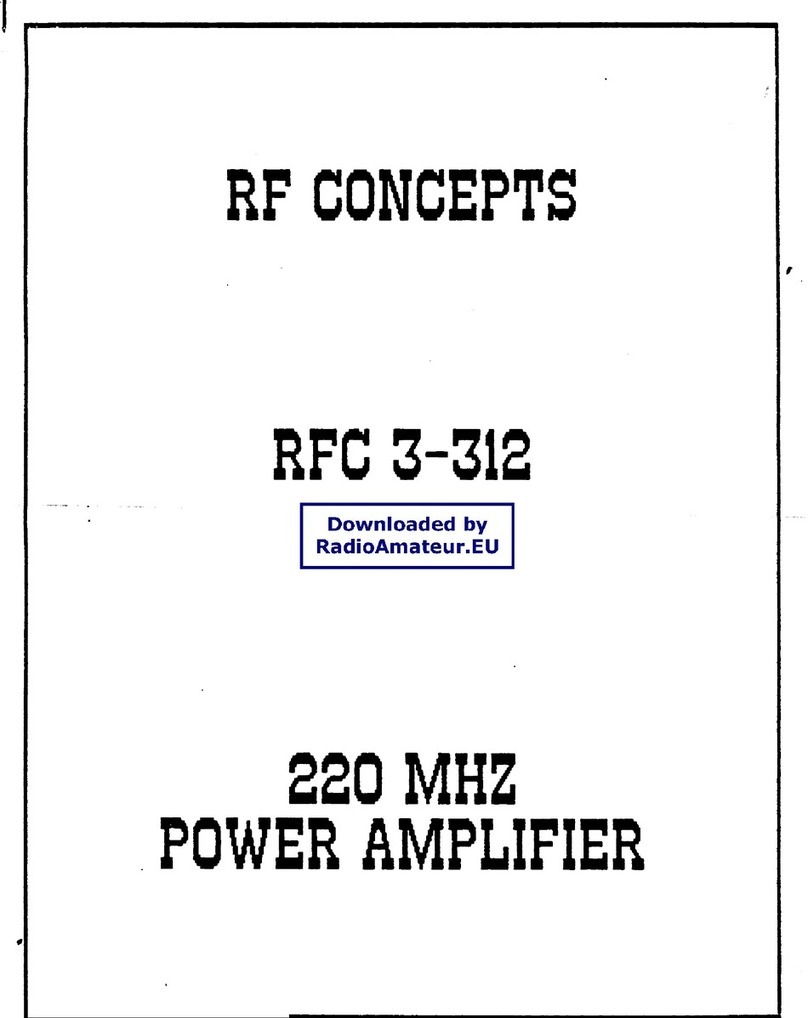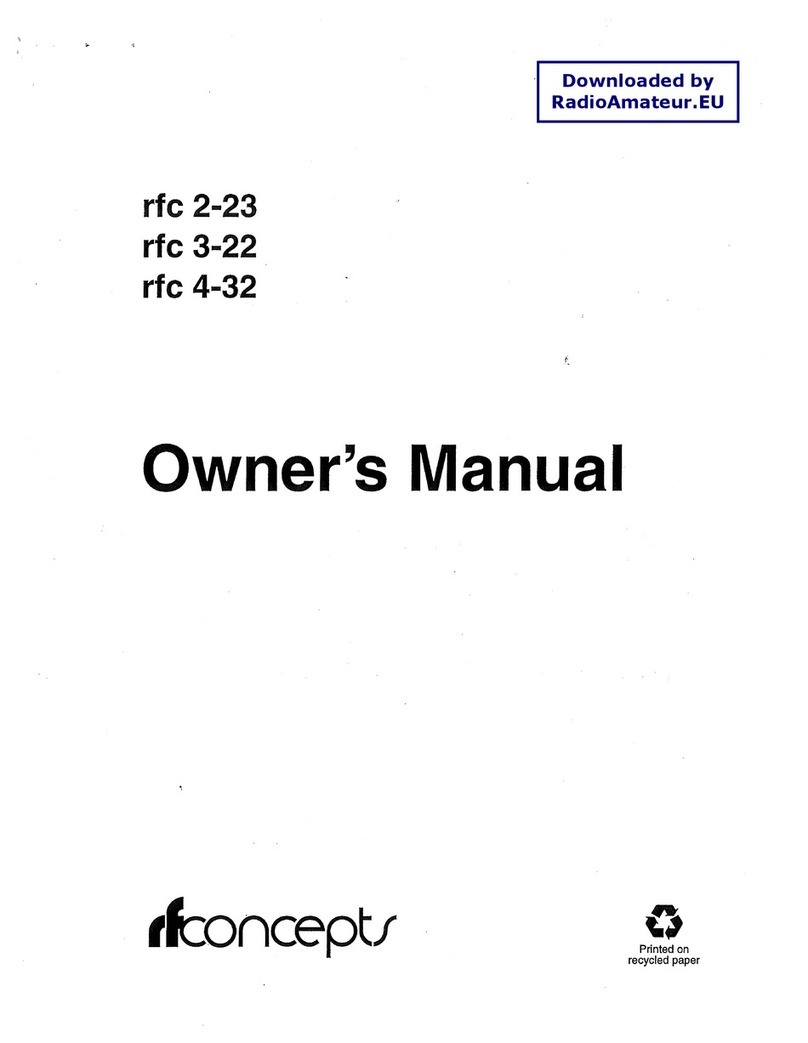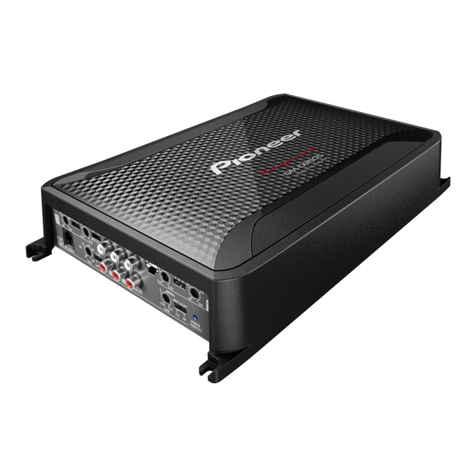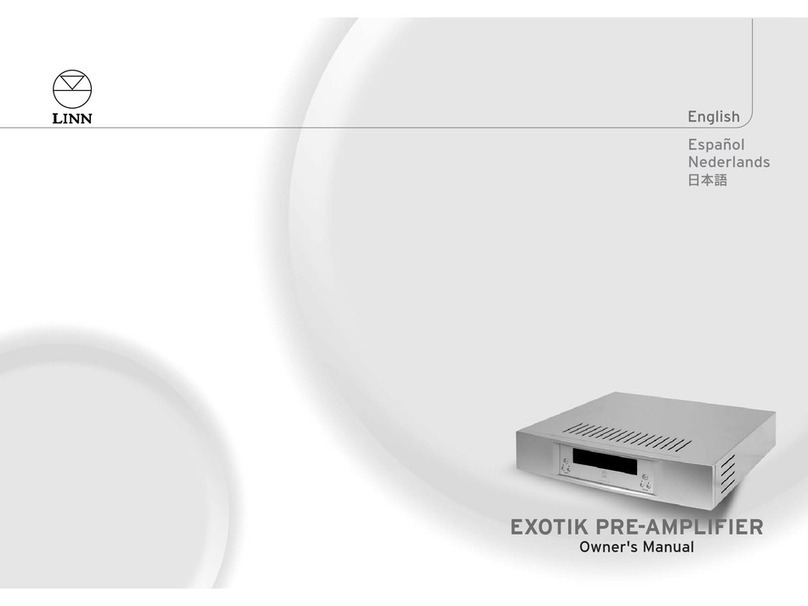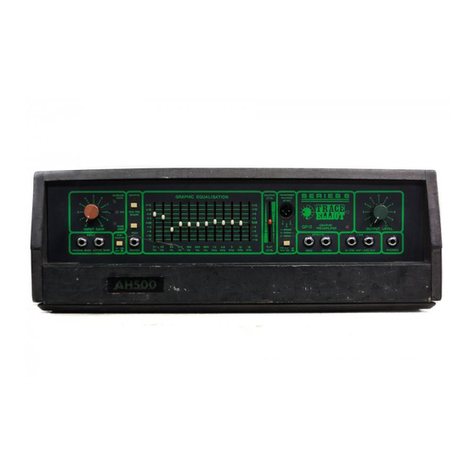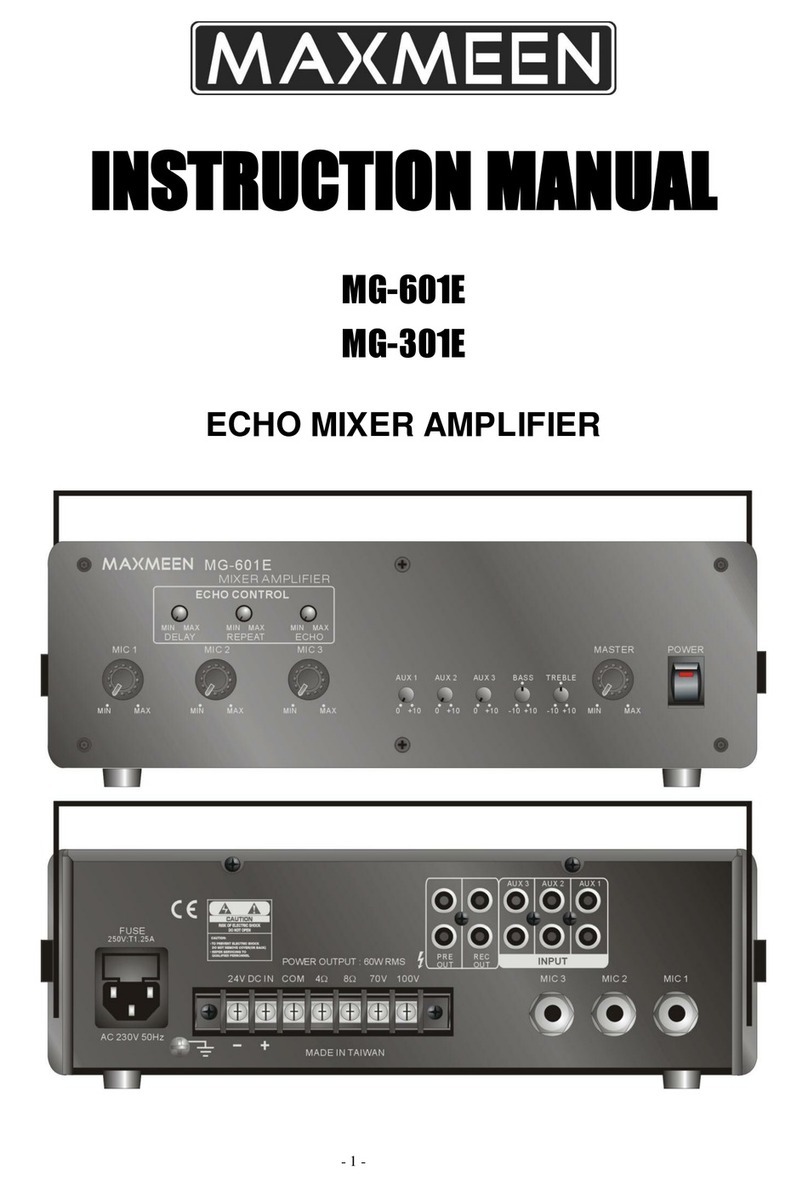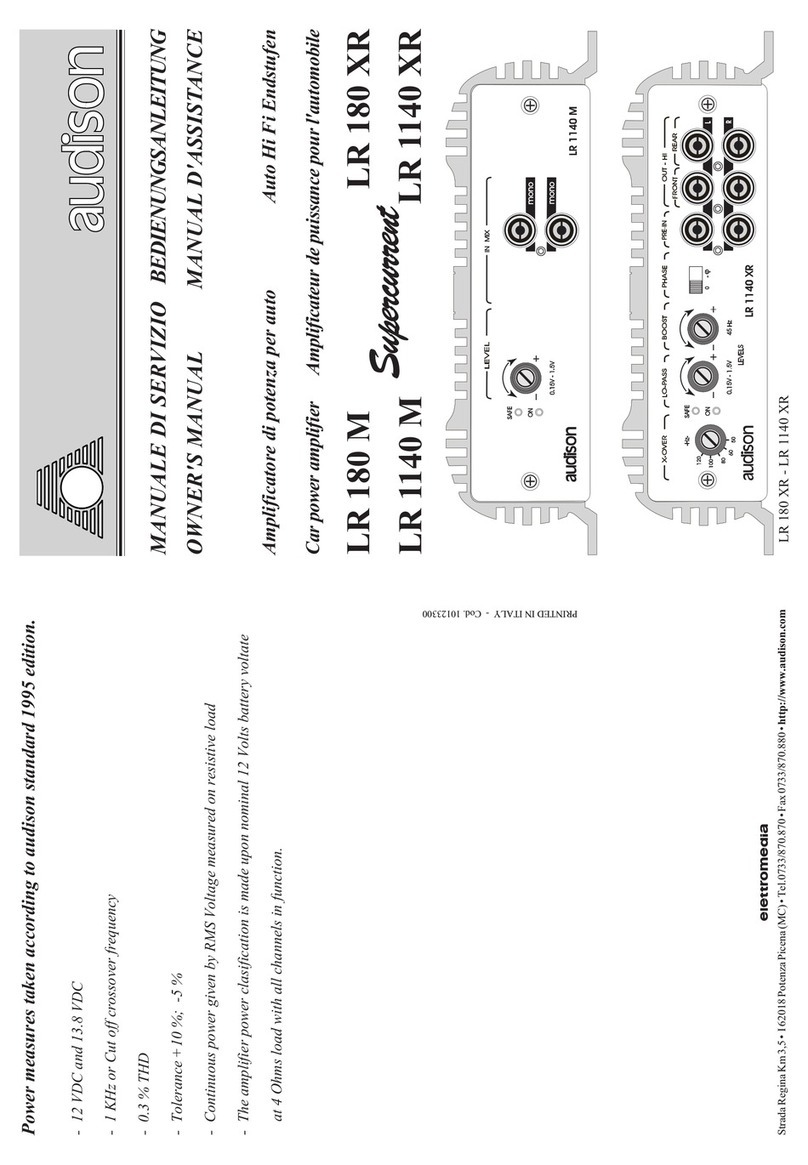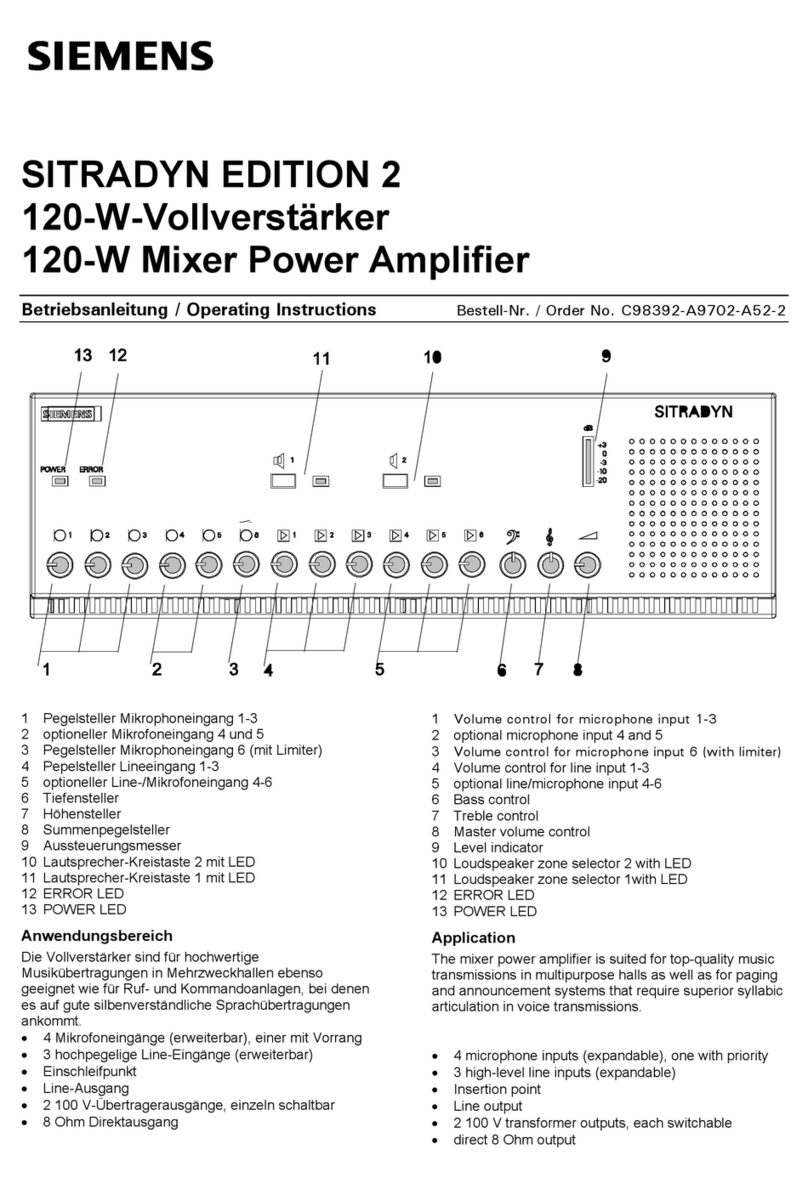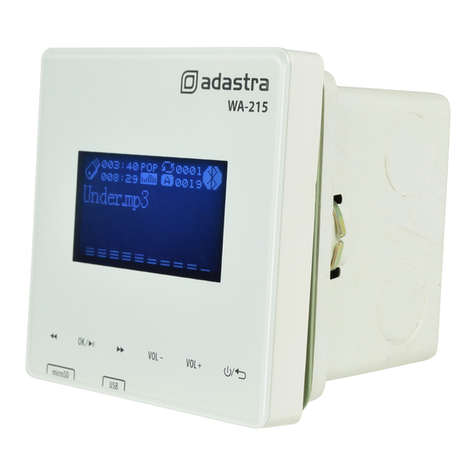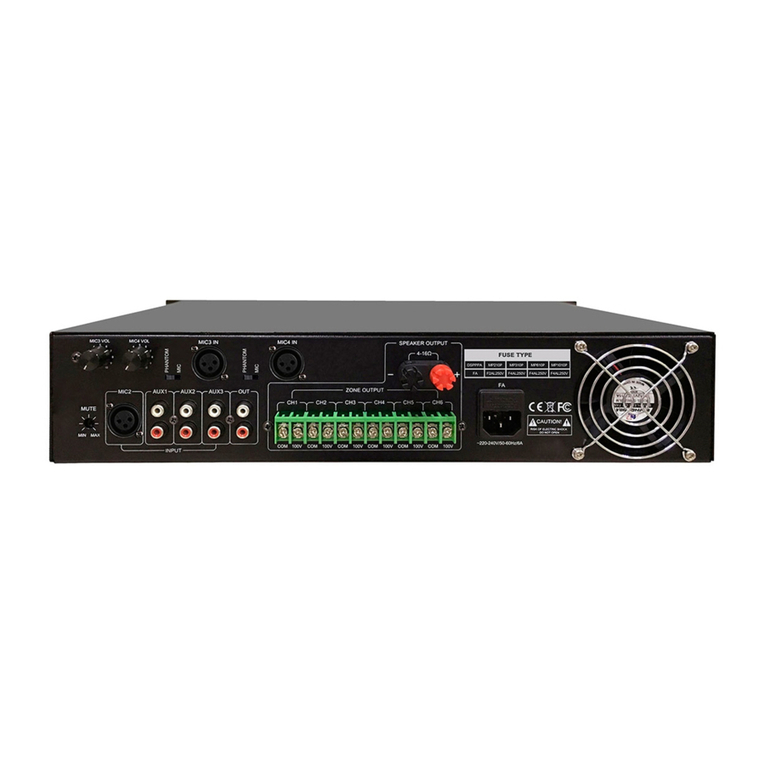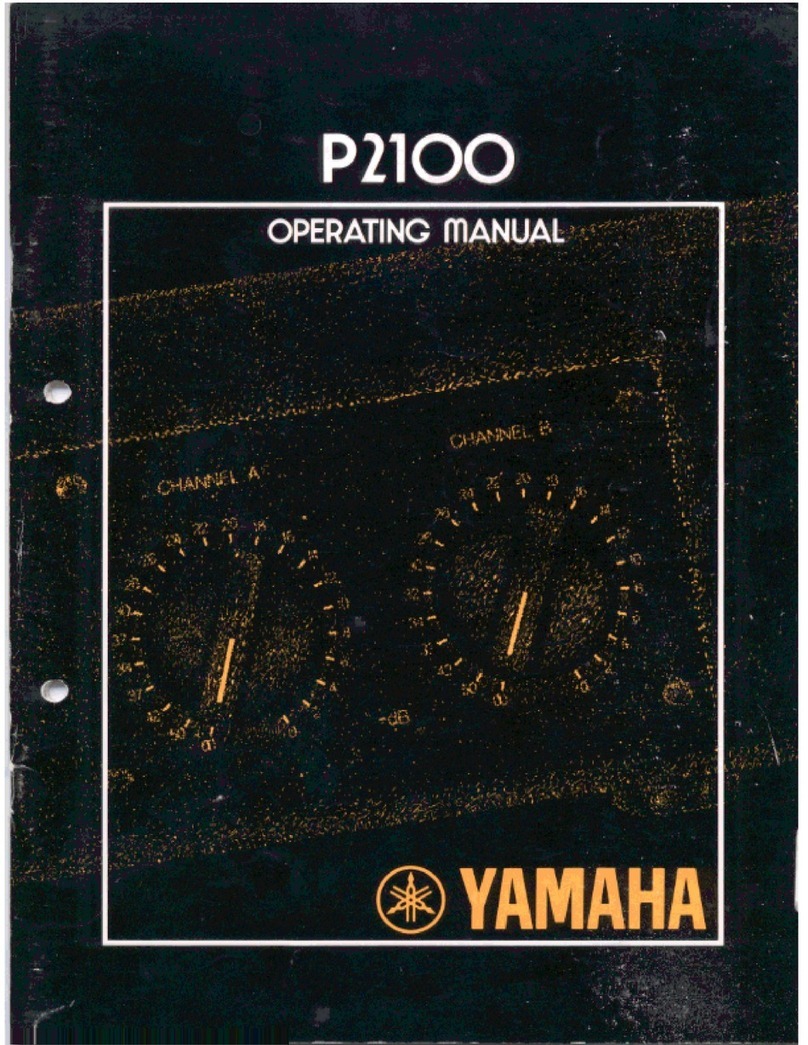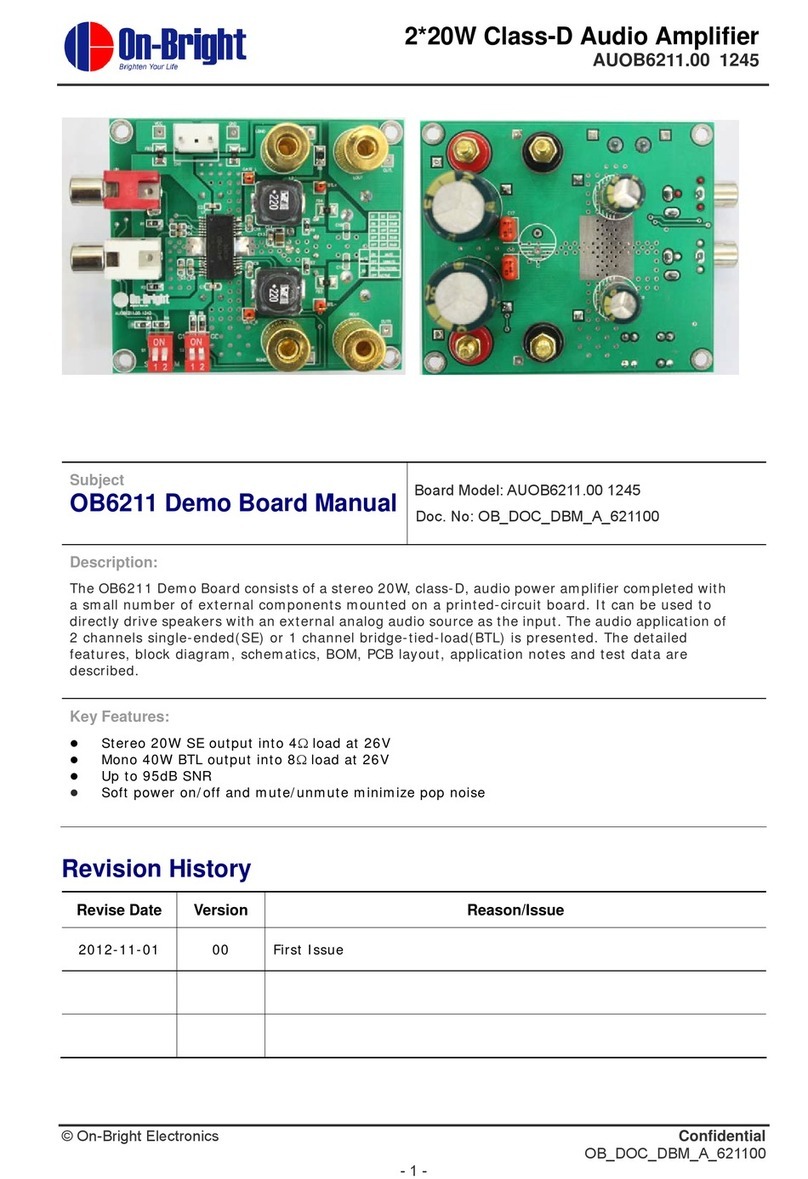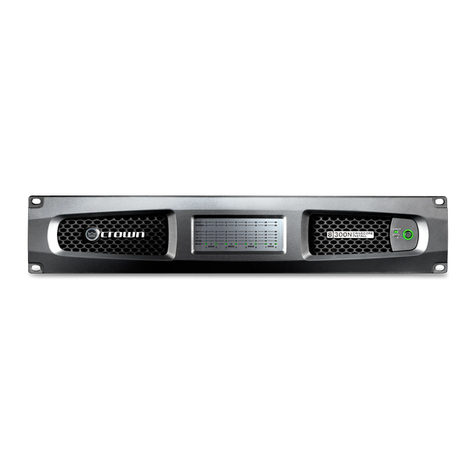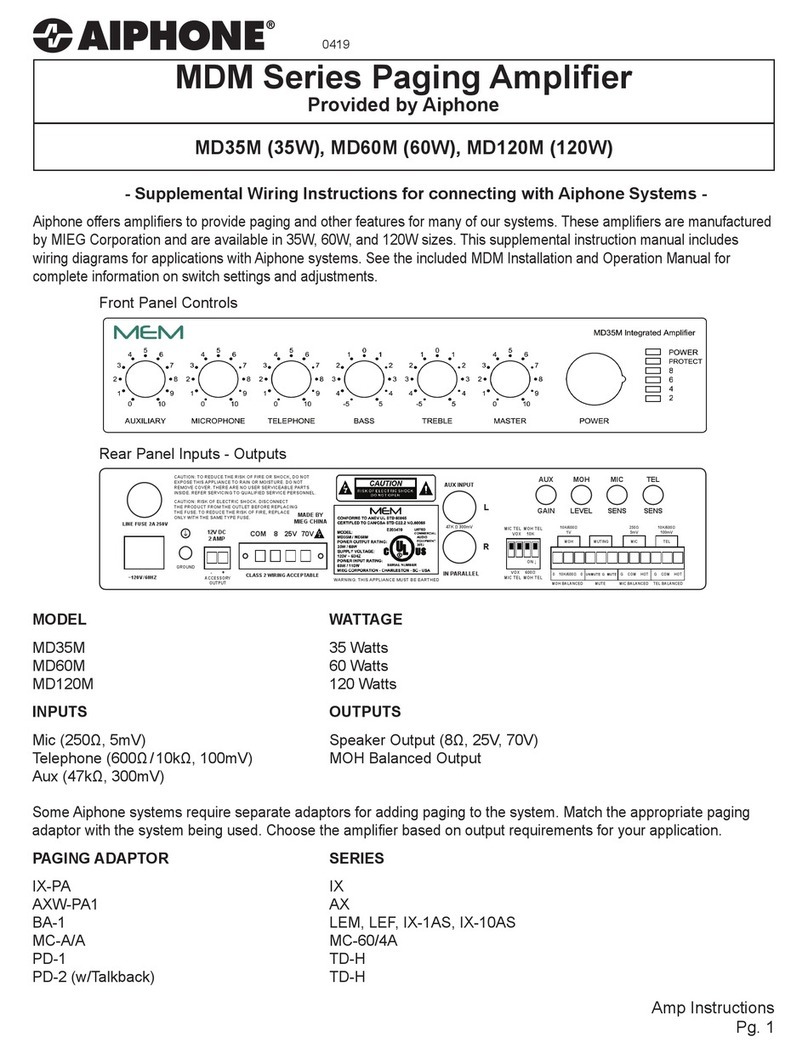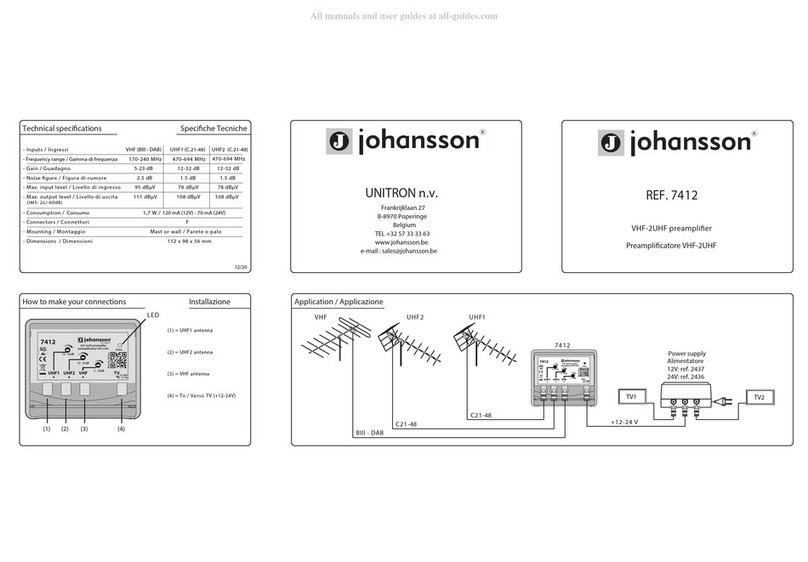RF Concepts Alpha 8406 User manual

RF Concepts
Alpha 8406 Linear Amplifier
User Manual
rfconcepts.com
Document Issue 1.0
February 2014

Alpha 8406 Linear Amplifier User Manual RF Concepts LLC
DOCNUMBER 8406
Document Issue 1.0
Page ii February 2014
Alpha 8406 Linear Amplifier User Manual
RF Concepts LLC
634 S Sunset St
Longmont CO 80501
303-473-9232
Prepared for RF Concepts by MH/GP/LW.
To reach technical support or obtain copies of this document, go to
rfconcepts.com.
Copyright © 2014 RF Concepts LLC. All rights reserved. Specifications
subject to change without notice.

Contents
DOCNUMBER 8406
Document Issue 1.0
February 2014 Page iii
Contents
1. Introduction . . . . . . . . . . . . . . . . . . . . . . . . . . . . . . . . . . . . 1-1
1.1 Product Description 1-1
1.2 Product Capabilities 1-2
1.3 Safety Considerations 1-3
1.4 Related Products 1-4
1.5 Assistance 1-4
2. Amplifier Components and Specifications . . . . . . . . . . . . . . . . . . . 2-1
2.1 Boards 2-3
2.2 Controls and Display 2-6
2.3 Output-Tank Circuit 2-6
2.4 Tube and Tube Deck 2-7
2.5 Specifications 2-9
3. Preparing Your Station . . . . . . . . . . . . . . . . . . . . . . . . . . . . . . 3-1
3.1 Prepare Your Station 3-1
3.2 Understand the Limitations of Operation at Nonstandard Line Voltages 3-4
4. Setting Up the Amplifier . . . . . . . . . . . . . . . . . . . . . . . . . . . . . 4-1
4.1 Unpack the Amplifier and Transformer 4-1
4.2 Connect the Transformer 4-2
4.3 Adjust the Tube and Exhaust Chimney 4-3
4.4 Connect the Cables 4-3
4.5 Set the Input-Drive Power 4-6
5. Operating the Amplifier . . . . . . . . . . . . . . . . . . . . . . . . . . . . . . 5-1
5.1 Start Up the Amplifier 5-1
5.2 Tune the Amplifier 5-2
5.3 Operate the Amplifier 5-5
5.4 (Optional) Operate the Amplifier Remotely 5-6
6. Maintaining the Amplifier . . . . . . . . . . . . . . . . . . . . . . . . . . . . . 6-1
6.1 Clean the Amplifier Chassis 6-1
6.2 Replace the Tube and/or Fuses 6-2
7. Diagnosing Faults and Troubleshooting . . . . . . . . . . . . . . . . . . . . 7-1
7.1 Diagnose Faults 7-1
7.2 Troubleshoot Problems 7-4
Terminology Term-1
Schematics Schem-1

Alpha 8406 Linear Amplifier User Manual RF Concepts LLC
Contents
DOCNUMBER 8406
Document Issue 1.0
Page iv February 2014

List of Procedures
DOCNUMBER 8406
Document Issue 1.0
February 2014 Page v
List of Procedures
Procedure 3-1, “Prepare your station,” page 3–1
Procedure 4-1, “Unpack the amplifier and transformer,” page 4–1
Procedure 4-2, “Connect the transformer,” page 4–2
Procedure 4-3, “Adjust the tube and exhaust chimney,” page 4–3
Procedure 4-4, “Connect the cables,” page 4–3
Procedure 4-5, “Set the input-drive power,” page 4–6
Procedure 5-1, “Start up the amplifier,” page 5–1
Procedure 5-2, “Tune the amplifier,” page 5–4
Procedure 5-3, “Operate the amplifier,” page 5–5
Procedure 6-1, “Clean the amplifier chassis,” page 6–1
Procedure 6-2, “Replace the tube and/or fuses,” page 6–2

Alpha 8406 Linear Amplifier User Manual RF Concepts LLC
List of Procedures
DOCNUMBER 8406
Document Issue 1.0
Page vi February 2014

1
DOCNUMBER 8406
Document Issue 1.0
February 2014 Page 1–1
1 Introduction
1.1 Product Description 1–1
1.2 Product Capabilities 1–2
1.3 Safety Considerations 1–3
1.4 Related Products 1–4
1.5 Assistance 1–4
Congratulations on your purchase of a professional-quality Alpha 8406
linear amplifier.
This manual contains information that you must follow, and cautions and
warnings that you must heed, to ensure safe installation and operation.
Before operating your amplifier for the first time, it is important that you
study this manual carefully — in particular, the preparation, setup, and
operation instructions.
!
IMPORTANT Failure to perform procedures properly may result in electric shock,
fire hazard, or serious damage that is not covered under warranty.
1.1 Product Description
The Alpha 8406 (see Figure 1-1) is a self-contained manual-tune very-
high-frequency (VHF) linear power amplifier.

Alpha 8406 Linear Amplifier User Manual RF Concepts LLC
Introduction
DOCNUMBER 8406
Document Issue 1.0
Page 1–2 February 2014
11
1
Figure 1-1 Alpha 8406
1.2 Product Capabilities
Product capabilities are as follows:
•Continuous radio-frequency (RF) output. The Alpha 8406 is capable
of 1.5-kW continuous RF output with no time limit on any authorized
amateur frequency in the range 50–54 MHz and on all commonly
used modes, including the following:
— All digital modes
— Frequency modulation (FM)
— Keyed continuous wave (CW)
— Radioteletype (RTTY)
— Single sideband (SSB)
— Slow-scan television (SSTV)
•Compatibility with popular amateur transceivers and exciters. The
Alpha 8406 requires ~50–65-W peak RF drive for 1.5-kW output.
•Capability of full CW break-in (QSK) when used with any
appropriate transceiver.
•Built-in protective functions. The control system incorporates
protective functions that minimize the probability of accidental
damage to the amplifier or its tube. In most cases, when a protective
function is tripped, the amplifier goes to standby mode.

11
1
DOCNUMBER 8406
Document Issue 1.0
February 2014 Page 1–3
RF Concepts LLC Alpha 8406 Linear Amplifier User Manual
Introduction
1.3 Safety Considerations
General Considerations
For safe operation, take the following precautions:
•Locate the amplifier where there is good air circulation all around and
on top of the cabinet. The unit may become hot during operation.
•Move the amplifier only with great caution, being sure to do the
following:
— Remove the transformer and move it separately from the
amplifier by means of its lifting handle. Never transport the
amplifier with the transformer in place, as together they weigh
~70 pounds.
— Use proper lifting techniques and two people.
•Remember that, although the Alpha 8406 meets international safety
standards and US Federal Communications Commission (FCC)
regulations, it works with high voltages that can be LETHAL.
!
IMPORTANT •NEVER open the amplifier case without first unplugging the
unit from the wall outlet.
•NEVER touch an antenna during transmission.
•NEVER turn on the amplifier without the cover securely in
place and all attachment screws inserted.
•NEVER turn the amplifier back on after a hard fault (that is, a
fault to power off) without waiting at least 20 seconds.
•NEVER cover or obscure the exhaust holes in the amplifier
cover. Never stick objects into the holes or allow liquids to
enter through the holes.
RF Exposure
The FCC requires users to check their installations for compliance with
published values for allowable exposure to RF fields. This information is
available in American Radio Relay League (ARRL) publications, FCC
printed rules, and on the web. We strongly recommend that you do this
for any installation, either fixed and at an expedition or contest site.

Alpha 8406 Linear Amplifier User Manual RF Concepts LLC
Introduction
DOCNUMBER 8406
Document Issue 1.0
Page 1–4 February 2014
11
1
SEE . . . •For information on RF exposure, see FCC OET Bulletin 65
Supplement B at http://www.fcc.gov/encyclopedia/oet-
bulletins-line.
•For questions regarding engineering your amplifier into your
amateur radio station, go to rfconcepts.com and click Support.
1.4 Related Products
Other products available to enhance your use of the Alpha 8406 include:
•Alpha 2000 dummy load
•Alpha 4510A standing-wave-ratio (SWR) meters and wattmeters
For more information, go to rfconcepts.com or call 303-473-9232.
1.5 Assistance
Technical assistance from RF Concepts is available from several sources.
•Go to our website at rfconcepts.com and click Support. On this site
you can get the following assistance:
— Alpha Forum
— FAQs
— Legacy equipment information
— Manuals
— Repair information
— Software downloads
— Tech tips
— Technical support
•E-mail us by completing a support request at rfconcepts.com.
•Fax us at 303-473-9660.
•Phone us at 303-473-9232.

2
DOCNUMBER 8406
Document Issue 1.0
February 2014 Page 2–1
2 Amplifier Components and Specifications
2.1 Boards 2–3
2.2 Controls and Display 2–6
2.3 Output-Tank Circuit 2–6
2.4 Tube and Tube Deck 2–7
2.5 Specifications 2–9
The Alpha 8406 uses a ceramic-and-metal forced-air-cooled tetrode
vacuum tube for amplification. The main power supply is an unregulated
transformer/rectifier/capacitor power supply for the high-voltage (HV)
and heater circuits. All other power supplies are regulated.
The control circuit uses a microprocessor “in the loop” to monitor and
control amplifier operation. There are eight circuit boards in the amplifier:
•Center-partition board
•Control board
•Display board
•HV board
•Low-pass filter board
•Mains board
•Transmit/receive (T/R) board
•Tube-deck board
In addition to these, the tube, tank circuit assembly, and transformer
complete the main sections of the amplifier. These major blocks are
described below.
The amplifier includes a 5-V power supply mounted behind the front
panel. Whenever the amplifier is plugged into the mains power, this
supply is active and there is power to the microcontroller on the main
control board. This feature enables the amplifier to be turned on or off
remotely. It also enables remote monitoring and debugging via a USB
cable connected to a computer.
The amplifier front, back, and interior are shown below (see Figure 2-1,
Figure 2-2, and Figure 2-3). Amplifier components are listed
alphabetically and described below.

Alpha 8406 Linear Amplifier User Manual RF Concepts LLC
Amplifier Components and Specifications
DOCNUMBER 8406
Document Issue 1.0
Page 2–2 February 2014
22
2
Figure 2-1 Amplifier front
Figure 2-2 Amplifier back

22
2
DOCNUMBER 8406
Document Issue 1.0
February 2014 Page 2–3
RF Concepts LLC Alpha 8406 Linear Amplifier User Manual
Amplifier Components and Specifications
Figure 2-3 Amplifier interior
2.1 Boards
The following amplifier boards are described below in alphabetical order:
•Center-partition board
•Control board
•Display board
•HV board
•Low-pass filter board
•Mains board
•Transmit/receive (T/R) board
•Tube-deck board
Center-Partition Board
The center-partition board contains the RF decoupling circuit on the B+
line as well as the crowbar safety circuit. When you remove the top cover
of the amplifier, the spring metal of this safety device shorts out the B+
line.

Alpha 8406 Linear Amplifier User Manual RF Concepts LLC
Amplifier Components and Specifications
DOCNUMBER 8406
Document Issue 1.0
Page 2–4 February 2014
22
2
!
IMPORTANT Do not defeat this safety circuit. It is placed there for your
protection.
Control Board
The control board is the heart of the amplifier. It is based on a PIC
microcontroller. This microcontroller has a built-in multichannel analog-
to-digital converter that monitors all critical voltages and currents in the
amplifier as well as the input power and output forward and reflected
power. It uses these converted values to control the amplifier’s operation
and to drive the display board on the front panel.
A USB port on the back of the amplifier is provided for remote
monitoring. The USB driver for the amplifier is provided on the CD that
ships with the amplifier or is available from the company website.
Display Board
The display board uses a MAX7219 multiboard LED-display-driver chip.
The chip receives data from the control board via a serial peripheral
interface (SPI); this data determines which LEDs to light. The board
contains a regulator to drop voltage from +12 V to +5 V for the display.
HV Board
The main high voltage for the amplifier is created on the HV board using
a full-wave bridge rectifier and a bank of capacitors. This power supply
has two 10-ohm resistors, one in the positive (B+) lead and one in the
negative return that goes to ground. This combination of resistors limits
the surge current in the case of a B+ arc.
The voltage across the resistor in the negative return is used to monitor
tube plate current in the control board. It is also used to generate a hard-
fault condition. When the power-supply current exceeds ~2.5
A, a relay
opens the coil circuit of the mains tap relays on the mains board, causing
the amplifier to go to the power-off state. This hard-fault circuit operates
independently of microprocessor control.
The regulated screen supply is also located on this board.

22
2
DOCNUMBER 8406
Document Issue 1.0
February 2014 Page 2–5
RF Concepts LLC Alpha 8406 Linear Amplifier User Manual
Amplifier Components and Specifications
All power-supply filter capacitors on this board have bleeder resistors that
discharge the capacitors in less than 60 seconds. If you must work on this
board, confirm the discharged condition with a voltmeter, due to the
remote possibility of bleeder resistor failure.
Low-Pass Filter Board
The output low-pass filter is a single-stage unit optimized for low loss at
6 m. The measured insertion loss is 0.14 dB. The inductor is made from
wide silver-plated strap material. The capacitors are low-loss porcelain
types. All joints are silver-soldered. Adequate cooling is ensured in two
ways: the board has slots to enable cooling from both sides and it is
mounted in front of the inlet to the blower to enable exposure to copious
air flow.
Mains Board
Power-supply functions are split between the mains board and the HV
board. The mains board deals mostly with the primary side of the
transformer. The various taps for the transformer primary are routed
through this board and so is the AC line input. Relays on the mains board
connect the AC line to the appropriate taps on the transformer primary.
Also on the mains board is a step-start circuit. This circuit consists of a
relay and a resistor, which are time-sequenced to limit the inrush current
into the amplifier when it is first turned on. The regulated –12 and –124-
V supplies are also located on this board. Many of the important voltages
for the amplifier are brought to test points on this board.
The primary voltage taps are located on the top of the mains board,
between the transformer and the front panel. There is a row of five “fast-
on” connectors (J22 through J26) and a flying jumper connector that
mates with them. The amplifier is always shipped with the jumper sent to
J22 (the 240-V position).
T/R Board
The transmit/receive (T/R) board contains the input and output relays as
well as the input-power detection and output directional wattmeter.
Voltages from the detector are connected to the control board.
A trimmer capacitor on this board is adjusted at the factory. You should
not touch it.

Alpha 8406 Linear Amplifier User Manual RF Concepts LLC
Amplifier Components and Specifications
DOCNUMBER 8406
Document Issue 1.0
Page 2–6 February 2014
22
2
The board also has a safety inductor on the RF output for 50–54-MHz
operation, located between the PCB and the rear chassis.
Tube-Deck Board
The tube-deck board is located in the tube deck, below the tube socket. It
contains critical circuit elements that need to be in close proximity to the
tube. The tube heater, bias, and screen connections are all located on this
board. The tube-deck temperature sensor and the input match for the tube
complete this board.
For more information on the tube deck, see Section 2.4, “Tube and Tube
Deck,” page 2–7.
2.2 Controls and Display
The Alpha 8406 controls enable you to adjust and monitor the amplifier
as needed (see Table 2-1).
Table 2-1 Amplifier controls
Control Purpose
LOAD Controls the load capacitor. Sets the amplifier plate loading
and determines the power level for best efficiency and
linearity.
Heavier loading is toward the 100 end and lighter loading
is toward the 0 end of the dial scale.
TUNE Controls the tune capacitor. Sets the output tank circuit to
resonance at each frequency.
Lower frequencies tend to tune toward the 0 end and higher
frequencies toward the 100 end of the dial scale.
2.3 Output-Tank Circuit
The output-tank circuit provides reliable high-efficiency, low-distortion
performance in a very compact volume.
In any VHF amplifier, the most critical design decision is the output-tank
network topology. We considered a transmission-line design but rejected
it as being difficult and expensive to build. Likewise, we considered and

22
2
DOCNUMBER 8406
Document Issue 1.0
February 2014 Page 2–7
RF Concepts LLC Alpha 8406 Linear Amplifier User Manual
Amplifier Components and Specifications
rejected the standard pi-L configuration that is used so widely at HF
because of tough FCC harmonic requirements and the difficulty of
achieving full output over the entire band.
The topology that we chose (see Figure 2-4) is the pi-C configuration,
which provides harmonic attenuation adequate to meet the requirements
of all countries globally that permit power outputs of 1500 W. In this
configuration, the anode capacitance of the tube forms the input
capacitance of the pi network. This network allows full coverage of the
band with two rugged air-variable capacitors. A single large silver-plated
inductor completes the tank arrangement; it is made from half-inch copper
tubing that is formed to shape, then silver-plated. The single-tube design
reduces tube capacitance and facilitates control of stray inductances in the
circuit.
Figure 2-4
B+
TO OUTPUT FILTER
TUBE ANODE
TANK INDUCTOR
TUNE CAP
LOAD CAP
BLOCKING CAP
RF CHOKE
Output-tank circuit
2.4 Tube and Tube Deck
The Alpha 8406 uses a 4CX1500B tetrode vacuum tube. The tube is
operated in Class AB1, with the following voltages:
•Plate voltage: 3500 V nominal
•Grid 1 voltage: –50 to –60 V
•Grid 2 voltage: +230 V
Electronic bias switching (EBS) increases the negative grid 1 voltage
during pauses in speech or between Morse-code elements. This reduces
the standing bias on the tube, resulting in less waste heat, longer tube life,
and higher overall amplifier efficiency. The artifacts of EBS are not
noticeable under normal communications conditions.
The tube is operated as a “swamped grid” tetrode design. The tube grid is
tied at RF to a 50-ohm swamping resistor that absorbs most of the input-
drive power. The RF voltage across this resistor is added to the grid 1 DC
bias to provide the net low-impedance tube grid 1 bias. The RF

Alpha 8406 Linear Amplifier User Manual RF Concepts LLC
Amplifier Components and Specifications
DOCNUMBER 8406
Document Issue 1.0
Page 2–8 February 2014
22
2
impedance represented by grid 1 and its capacitance are compensated for
by a series inductance to provide SWR <2:1 across the full 6-m band at
the amplifier’s input.
The tube deck is a mechanical assembly enclosing the tube socket and the
tube-deck board. The tube socket contains the integral screen grid (grid
2)
RF bypass capacitors as well as contacts for the screen, heater, and
filament of the tube.
The temperature sensor on the tube-deck board sends data to the
amplifier’s control board. This information is used to control the speed of
the DC squirrel-cage blower that exhausts into the tube deck. Cool air is
drawn into the amplifier by the muffin fan at the rear of the amplifier and
over the transformer and the high-voltage section. The air then flows
through the amplifier’s center partition and is pulled in by the blower and
forced through the tube fins to keep the tube within the correct operating-
temperature range.
The blower has three speeds (low, medium, and high). The amplifier’s
control board determines which speed to set based on the temperature that
is measured in the tube deck. Any time the amplifier is keyed and
producing RF for more than 30 seconds continuously, the blower speed is
set to medium speed. After 60 seconds, it is set to high speed.
NOTE •The amplifier’s grid-current-limiting circuits provide substantial
protection against possible tube damage. Therefore, the amplifier
does not generate or use Automatic Level Control (ALC) voltages
to control an exciter. You need only set the input-drive power as
explained in Section 4.5, “Set the Input-Drive Power,” page 4–6.
•To prolong tube life, refrain from cycling AC power on-off-on-off
repeatedly. It is less stressful to leave equipment on and in
standby mode for several hours than to cycle it on and off
repeatedly.

22
2
DOCNUMBER 8406
Document Issue 1.0
February 2014 Page 2–9
RF Concepts LLC Alpha 8406 Linear Amplifier User Manual
Amplifier Components and Specifications
2.5 Specifications
The amplifier’s specifications are as follows:
Table 2-2 Alpha 8406 linear amplifier specifications
Parameter Value
Frequency coverage 50–54 MHz
Input-drive level 50 W nominal
Power output 1500 W
SWR tolerance 3:1
Duty cycle 100%
Tube 4CX1500B
Intermodulation level 34 dB two-tone (typical)
Harmonics –72 dBc
Mode of operation AM, CW, SSB, FM, RTTY, JT-65
Input AC voltage 100, 120, 200, 220, 240 selectable
AC current <15 amps @ 240 VAC @1500 W
Input impedance 50 ohms
Output impedance 50 ohms
RF connectors N female
Cooling Forced air
Size 17.3"W × 7"H × 19.5"D including muffin fan
Weight 70 lb (31.8 kg)
T/R relay Vacuum QSK
Tuning Manual
Display Bargraph LED
Interface USB
Protection Against all common faults
RF bypass level <300 W

Alpha 8406 Linear Amplifier User Manual RF Concepts LLC
Amplifier Components and Specifications
DOCNUMBER 8406
Document Issue 1.0
Page 2–10 February 2014
22
2
Other manuals for Alpha 8406
1
Table of contents
Other RF Concepts Amplifier manuals
